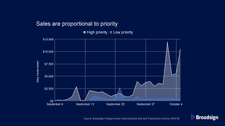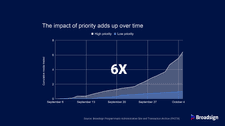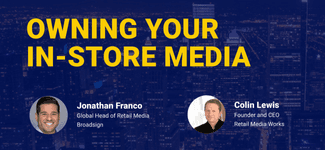This has been a year of highs and lows in programmatic. Demand evaporated in the early days of the pandemic, then surged back to record highs. Accessibility has never been better, and more and more buyers understand the value of adding DOOH to their existing digital campaigns.
In the midst of all this topsy-turviness, we found really encouraging data. This year, our customers who transacted programmatically on open deals were delivering about 3x the gross revenue as those who primarily transacted only in private deals.
There’s a lot to unpack there. It’s encouraging, because it validates our entire approach to programmatic and the way we have built our platform around that approach. It also gives us a great place to start for creating a blueprint for programmatic DOOH success.
Watch our SVP and GM of Programmatic Platforms, Adam Green, walk through why Open RTB is outperforming private deals, or read on for the details below.
Open RTB brings in the money
Let’s take a look at programmatic sales data representing the period of September and October of 2020.
The line in white represents customers with open deals with DSPs. This means the DSPs, on any given day, can just go in and trade via RTB – no calls or other communications required. They have an always-on connection.
The line in blue represents customers who we’ll call “closed.” This means they do not have this open programmatic arrangement. Someone has to get in contact with this network and work with them to manually set up a programmatic sale.
The trend’s been consistent: On average, networks with open programmatic arrangements are making three times as much money as those that primarily use private deals.
We verified these numbers to see how true the correlation is. Without naming names, here’s a comparison of two customers with very similar profiles: similar size, inventory, audience, and so on. The biggest difference is that one takes the open approach to programmatic and the other takes a closed approach.
What’s even more interesting is that the business employing the open approach has a smaller staff dedicated to programmatic – fewer people handling ops, finance, charting, scheduling, etc. That means that on top of making more money from programmatic, they’re also keeping a much greater proportion of that money as profit.
Why it’s important to prioritize programmatic
There’s another key ingredient we’ve seen associated with top performance by programmatic businesses: prioritizing programmatic transactions.
Here we have another set of comparable media owners.
The line in white represents the media owner that makes a priority of programmatic transactions. By default, their inventory is available for programmatic purchase, and if a direct sale is made, the relevant inventory is taken out of the pool.
The line in blue represents a media owner that only makes programmatic inventory available when it hears there is demand for it.
Over time, the benefit of prioritizing programmatic stacks up in a big way. Across the board, it leads to about a 6x benefit vs. just making supply available when people are asking for it.
A final key point: Dedicated programmatic sales staff boosts programmatic sales
Still today, there’s concern that programmatic takes away jobs from folks doing the work of direct OOH sales. But digging into the data, we see that dedicated sales teams are key to success in programmatic.
In this image, the white line represents publishers that either have a dedicated programmatic sales team or incentivize their regular sales team to build relationships and help put together programmatic deals. The blue line represents publishers who don’t.
Throughout the programmatic recovery, publishers who did incentivize or actively pursue programmatic sales made 1.4 times the sales as publishers that didn’t. None of this is meant to suggest that devoting sales resources to programmatic is a must. Just that if you want to get the most value possible out of programmatic, it’s the strategy that is likeliest to bear fruit.
Want to succeed with programmatic DOOH sales?
See how Broadsign can help












